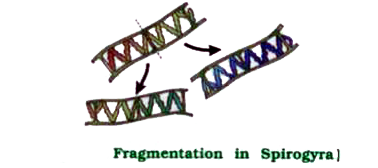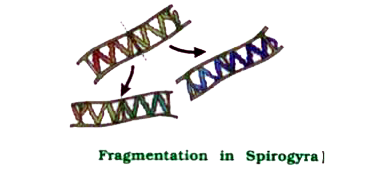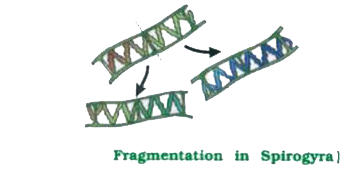Take one or two drops of butter milk on a slide, spread it. Heat the slide slightly on a lamp (3-4 seconds). Add a few drops of crystal violet on it. Leave it for 30 to 60 seconds and wash the slide gently with water. Observe the slide under the compound Microscope. Draw rough sketches in your note book of what you have observed.Solution in Telugu
Step by step video & image solution for Take one or two drops of butter milk on a slide, spread it. Heat the slide slightly on a lamp (3-4 seconds). Add a few drops of crystal violet on it. Leave it for 30 to 60 seconds and wash the slide gently with water. Observe the slide under the compound Microscope. Draw rough sketches in your note book of what you have observed. by Biology experts to help you in doubts & scoring excellent marks in Class 8 exams.
Updated on:21/07/2023Topper's Solved these Questions
Similar Questions
How do you vaccines works in our body?
View SolutionHow do you vaccines works in our body?
View SolutionDrop a drop of water on a slide. Gently tap any one flower like hibiscus, ball, grass chamomile on the water. Drop-like structures appear in the water. These are the pollen grains. Examine these first with a magnifying glass and then under a microscope. Take a pollinator slide from your lab and examine it under a microscope. Draw a map of the pollen you examined. Compare the map you drew with the map below.
View SolutionTo observe binary fission in Amoeba.
Apparatus: Microscope, permanent slide of Amoeba.
Procedure :
→ Observe a permanent slide of Amoeba under a microscope.
→ Observe another permanent slide of Amoeba showing binary fission.
→ Compare your observations in both the slides.
Is Amoeba prokaryotic or eukaryotic organism ?
View SolutionTo observe binary fission in Amoeba.
Apparatus: Microscope, permanent slide of Amoeba.
Procedure :
→ Observe a permanent slide of Amoeba under a microscope.
→ Observe another permanent slide of Amoeba showing binary fission.
→ Compare your observations in both the slides.
Can you give the sequence of binary fission in Amoeba ?
View SolutionTo observe binary fission in Amoeba.
Apparatus: Microscope, permanent slide of Amoeba.
Procedure :
→ Observe a permanent slide of Amoeba under a microscope.
→ Observe another permanent slide of Amoeba showing binary fission.
→ Compare your observations in both the slides.
Which unicellular, eukaryotic organisms reproduce through binary fission ?
View SolutionTo observe filamentous algae under microscope. Apparatus : Microscope, slide, coverslip. Materials : Glycerine, pond water, blotting paper. Procedure : rarr Collect water from a lake or pond that appears dark green and contains filamentous structure. rarr Put one or two filaments on a slide. Put a drop of glycerine on the filaments and cover it with a coverslip. rarr Observe the slide under a microscope. State the example of filamentous organism.
View SolutionTo observe filamentous algae under microscope.
Apparatus : Microscope, slide, coverslip.
Materials : Glycerine, pond water, blotting paper.
Procedure :
→ Collect water from a lake or pond that appears dark green and contains filamentous structure.
→ Put one or two filaments on a slide.
Put a drop of glycerine on the filaments and cover it with a coverslip.
→ Observe the slide under a microscope.

Can you identify different tissues in the filaments ?
View SolutionTo observe filamentous algae under microscope.
Apparatus : Microscope, slide, coverslip.
Materials : Glycerine, pond water, blotting paper.
Procedure :
→ Collect water from a lake or pond that appears dark green and contains filamentous structure.
→ Put one or two filaments on a slide.
Put a drop of glycerine on the filaments and cover it with a coverslip.
→ Observe the slide under a microscope.

Why is filament of spirogyra green in colour ?
View SolutionTo observe filamentous algae under microscope.
Apparatus : Microscope, slide, coverslip.
Materials : Glycerine, pond water, blotting paper.
Procedure :
→ Collect water from a lake or pond that appears dark green and contains filamentous structure.
→ Put one or two filaments on a slide.
Put a drop of glycerine on the filaments and cover it with a coverslip.
→ Observe the slide under a microscope.

Is spirogyra a prokaryotic or eukaryotic organism ?
View SolutionTo observe filamentous algae under microscope. Apparatus : Microscope, slide, coverslip. Materials : Glycerine, pond water, blotting paper. Procedure : rarr Collect water from a lake or pond that appears dark green and contains filamentous structure. rarr Put one or two filaments on a slide. Put a drop of glycerine on the filaments and cover it with a coverslip. rarr Observe the slide under a microscope. How do spirogyra reproduce asexually ?
View SolutionObserve a permanent slide of blood smear under a compound microscope. What did you see?
View SolutionTake a few drops of water from a pond. Spread on a glass slide and observe through a microscope. Do you find tiny organisms moving around?
View SolutionActivity-based question : Activity : Prepare a temporary mount of one drop of pond of water on a glass slide. Observe it under low power and high power microscope.
View SolutionCollect a cup of greenish pond water in our surroundings. Put a drop of water on the slide. Keep it under microscope and observe. What would you find out ? Draw rough
View Solution
